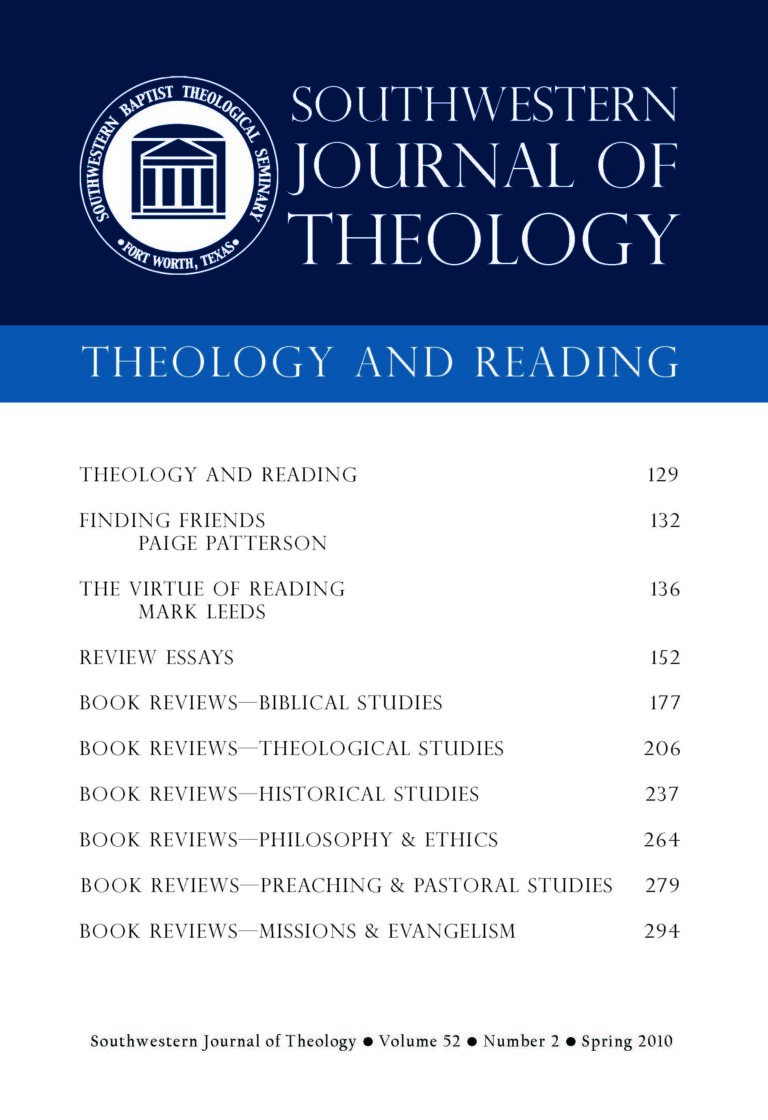
Theology and Reading
Southwestern Journal of Theology
Volume 52, No. 2 – Spring 2010
Managing Editor: Malcolm B. Yarnell III
By David Toshio Tsumura. The New International Commentary on the Old Testament. Grand Rapids: Eerdmans, 2007. 720 pages. Hardcover, $50.00.
Japan Bible Seminary’s David Toshio Tsumura has given us a fine new commentary on 1 Samuel. He overviews the history of the modern discussion of the text of 1 Samuel, which, he notes is “allegedly ‘in extremely poor condition’” (3). Against the tendency to emend the Masoretic Text in light of the Septuagint and the other versions, Tsumura insists that “The primary task of exegetes of ancient texts . . . is to interpret data in its original context, not to alter the data so that they can explain it easily” (8). Tsumura suggests that some difficulties are due not to a corrupt text but to phonetic spellings, misunderstood Hebrew grammatical structures, or idiomatic expressions. He suggests, “A narrative like 1–2 Samuel could have been written, at least partly, as if it was heard or spoken,” thus “the majority of proposed emendations are needless” (10).
Tsumura argues that the “final editing of 1–2 Samuel, with minor adjustments, was probably made no later than the late 10th century B.C.” (11). The Philistines are identified as being from the “Sea Peoples, who migrated from the Aegean” (34). They were uncircumcised but neither unsophisticated nor uncultivated (37). Tsumura provides a fascinating discussion of the historical and religious background of 1–2 Samuel, and his discussion of grammar and syntax is informed by both modern linguistics and more traditional grammatical categories.
The traditional threefold division of 1 Samuel is broadly followed: Samuel (1–7), Saul (9–15), and David (16–31). Tsumura sees the purpose of 1 Samuel being to highlight the establishment of the monarchy and the preparation of David (73). He argues that the references to daughter/sons of Belial (e.g., 1:16; 2:12) should be rendered to reflect a person’s connection to the divine name Beliyaal rather than as a “worthless” man or woman (124). He does not explore what this might imply about the way that people in the OT are reckoned in terms of “corporate personality” as belonging either to the “seed of the woman” or to the “seed of the serpent.”
This commentary is very strong on matters textual, grammatical, and historical, and Tsumura allows the rest of the OT to inform his interpretation. But readers should be aware that the commentary gives almost no attention to canonical biblical theology—the flow of redemptive history, typological patterns between, or the ways this flow of redemptive historical patterns might influence and be fulfilled in the New Testament. For another commentary on 1–2 Samuel that reverses these emphases (little attention to text criticism, grammar, and history, while focusing on canonical biblical theology), see Peter Leithart’s A Son to Me: An Exposition of 1 & 2 Samuel.
David Toshio Tsumura has advanced the discussion of 1 Samuel, and his bold position on the text of 1–2 Samuel is a refreshing, if controversial, perspective on the reliability of the Masoretic Text. No researcher will be able to ignore this volume, and no preacher will want to be without it.





